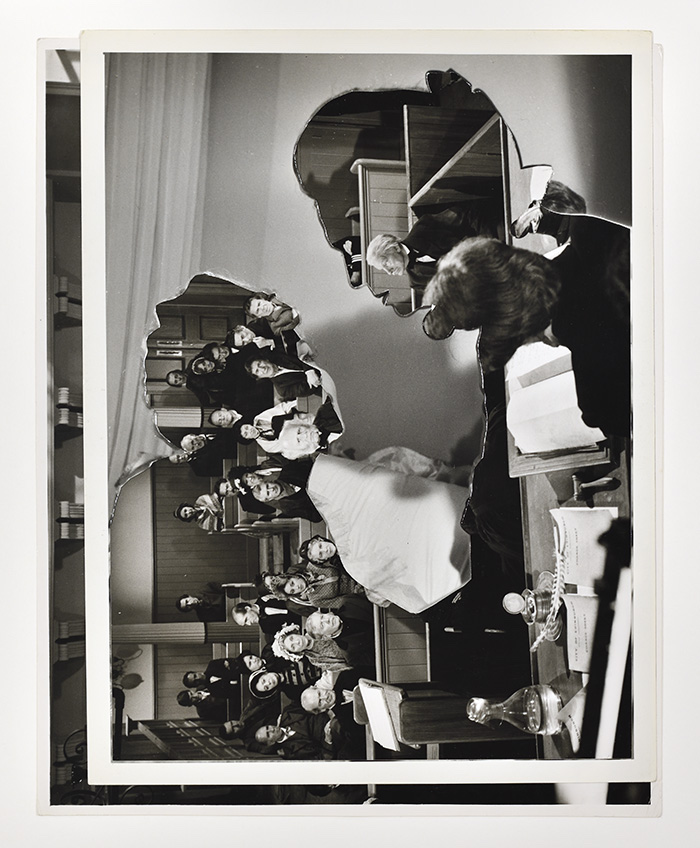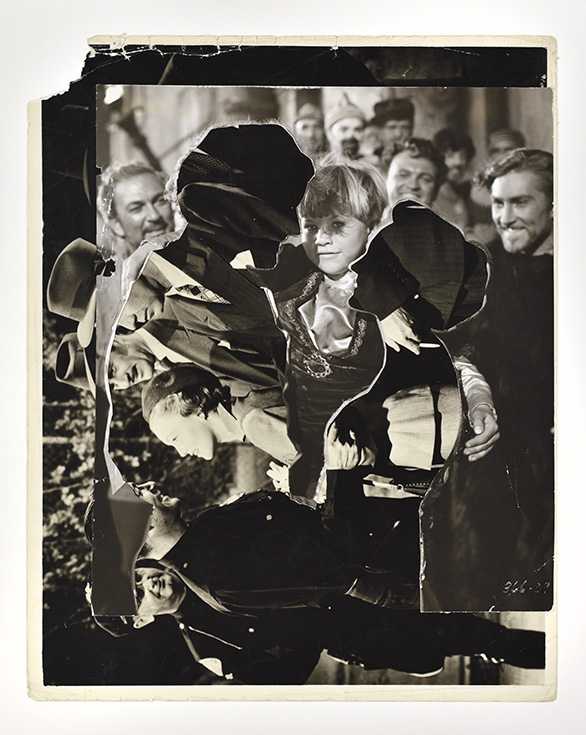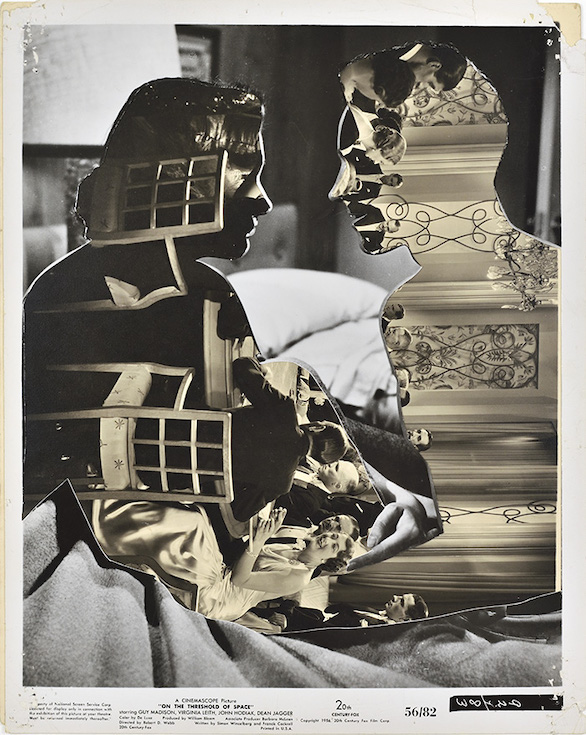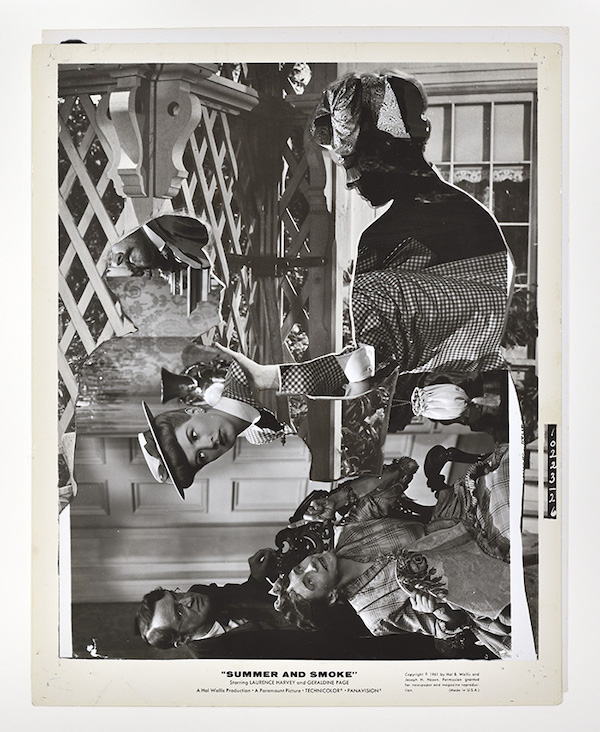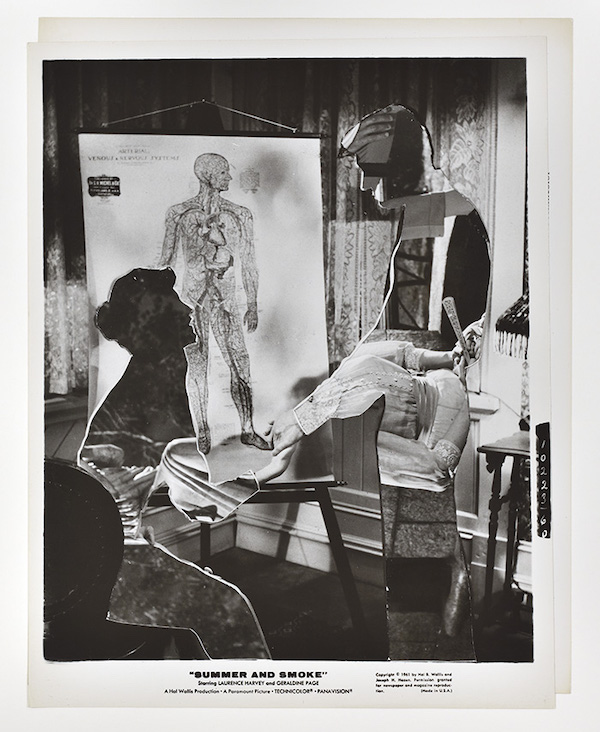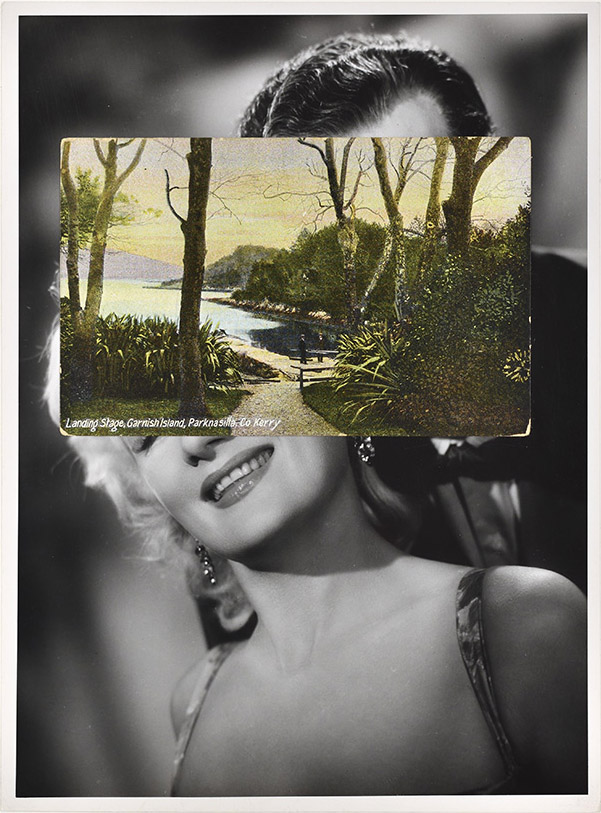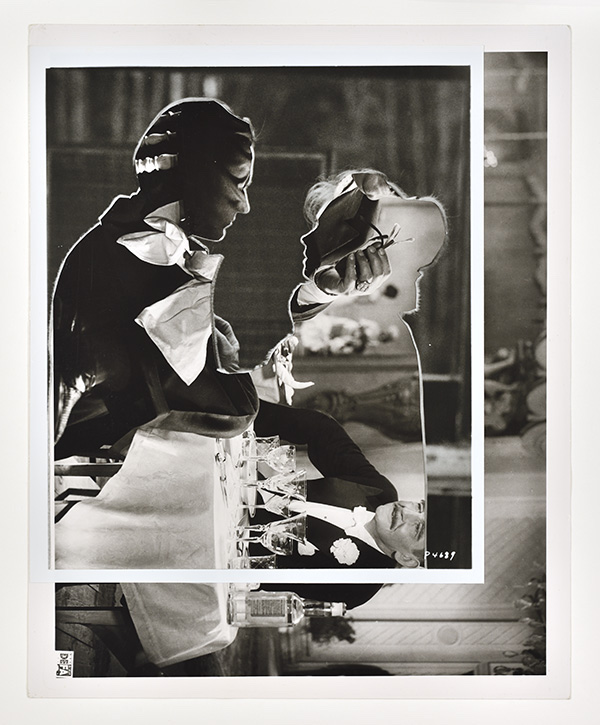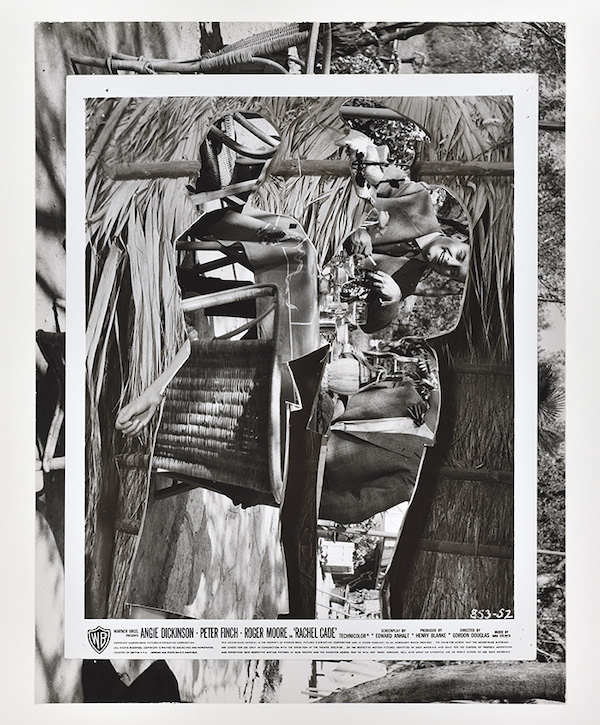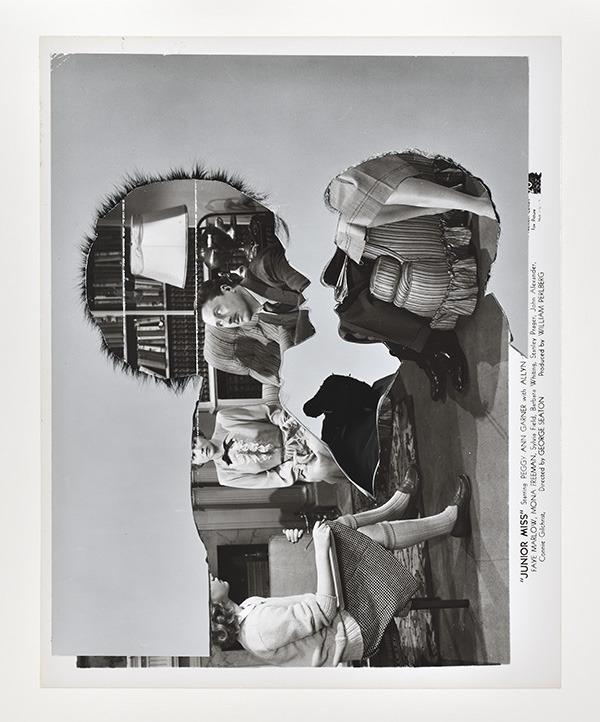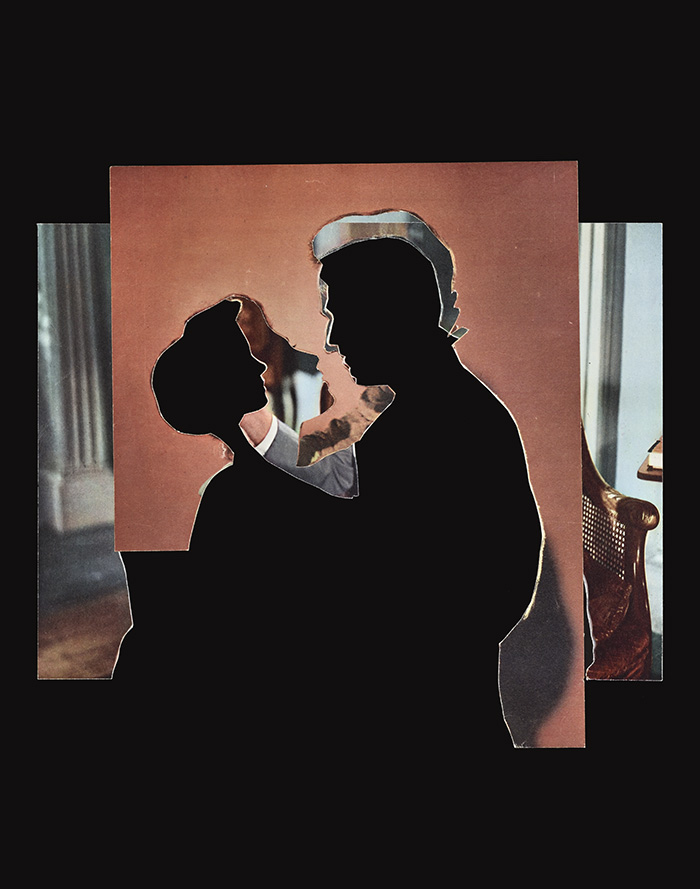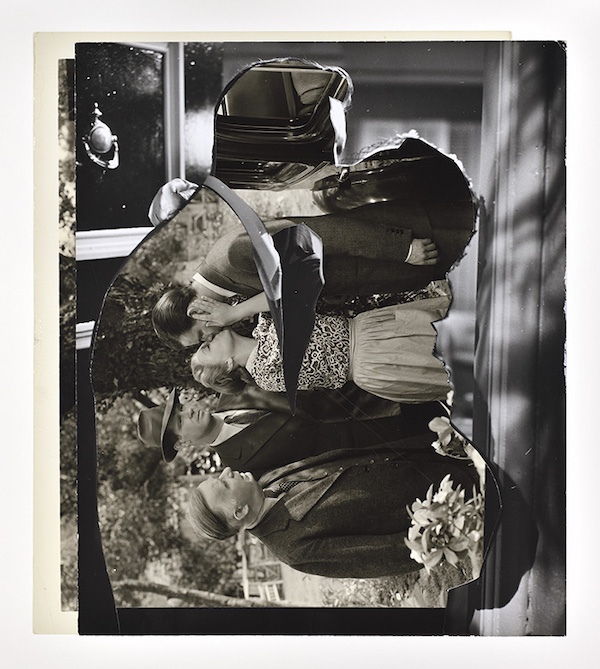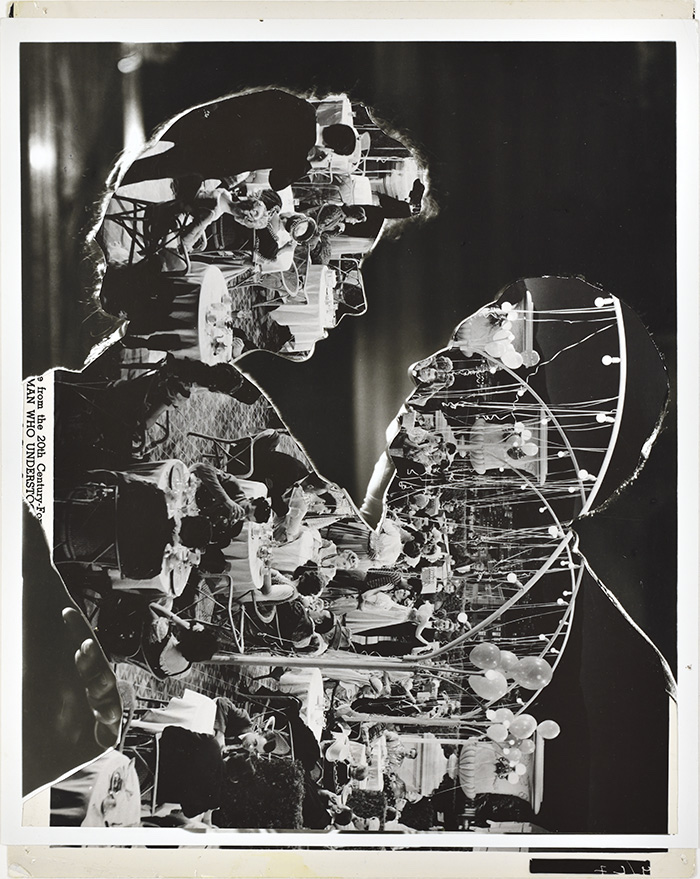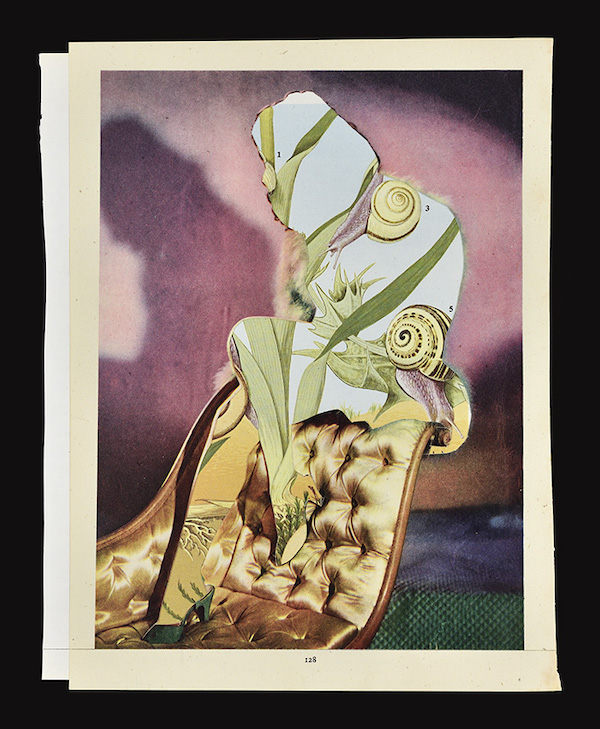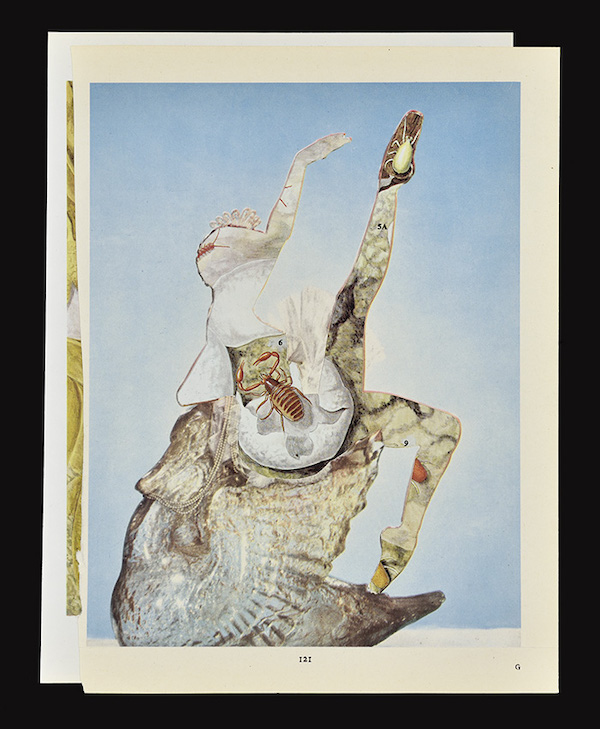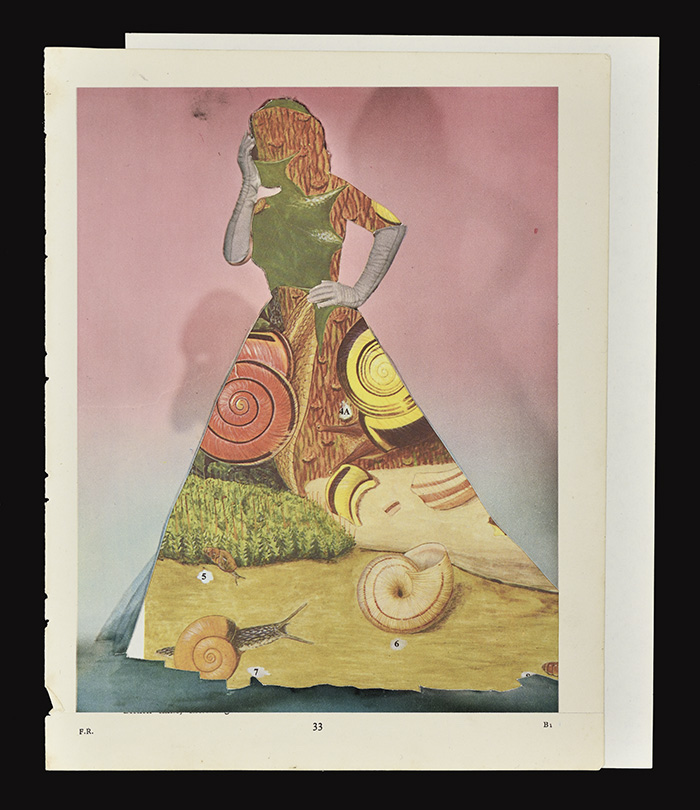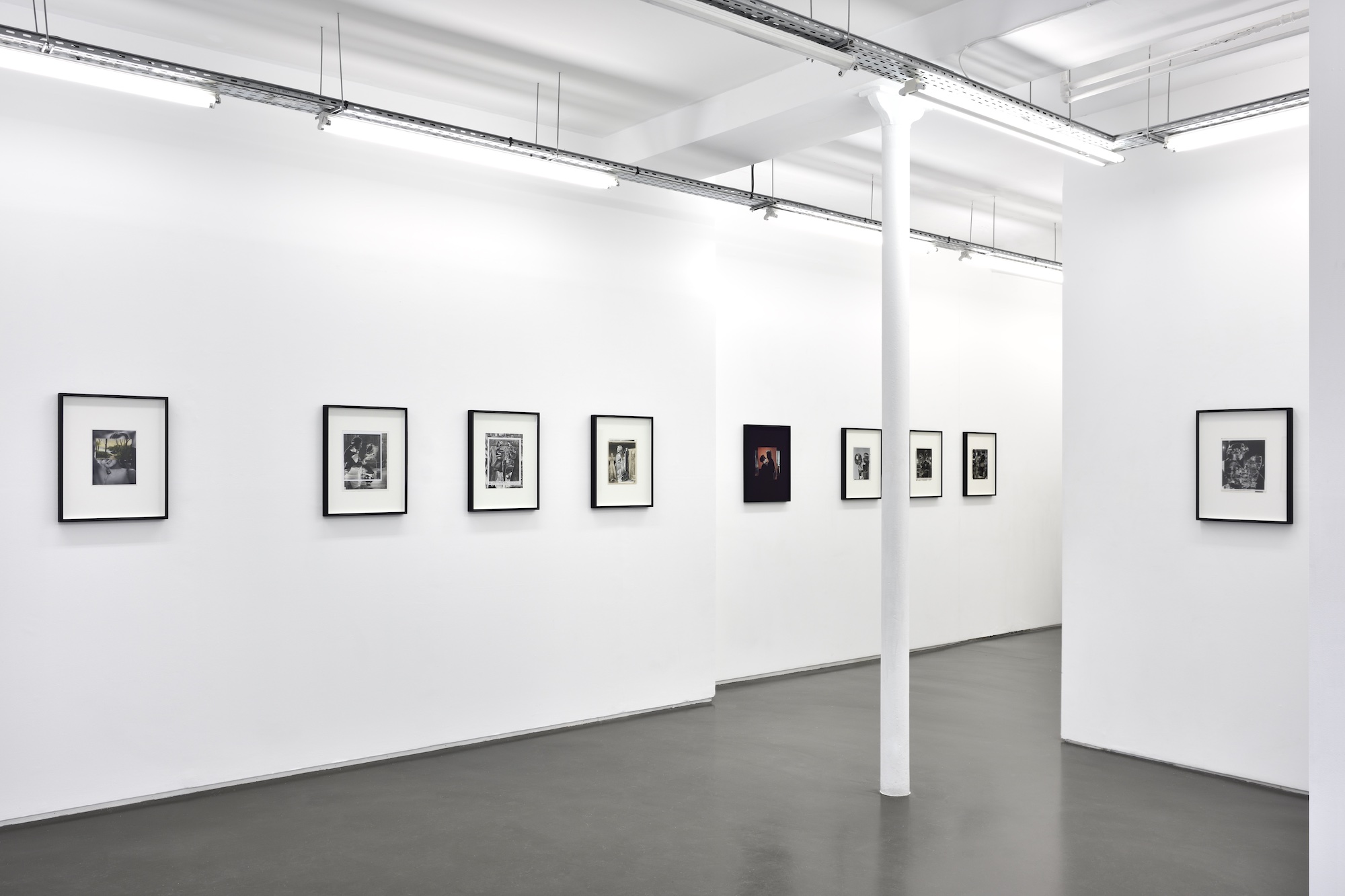
View of the exhibition Galerie Maïa Muller – Copyright Rebecca Fanuele
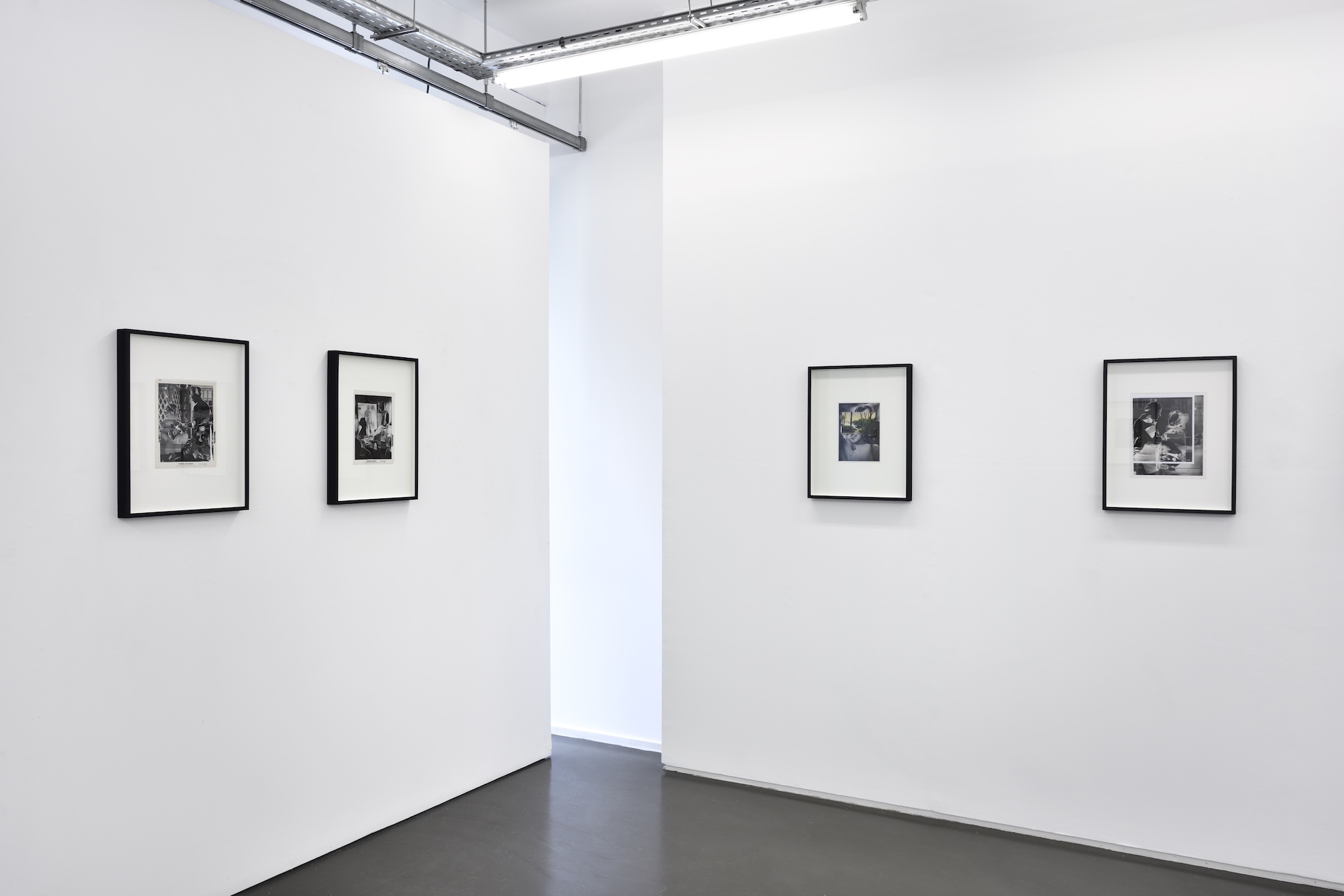
View of the exhibition Galerie Maïa Muller – Copyright Rebecca Fanuele
Many years ago, photographs adorned the foyer of movie theatres when a film was being shown. Intended to attract the attention of a passer-by and to arouse the desire to go in and watch the film with its evocative name – Gorky Park, The Great Jewel Robber, Junior Miss or again Summer and Smoke – they were regularly replaced by others very similar to those that were there previously. The decor, the lighting, the framing of the shot, the position of the actors; everything evokes in a single image the atmosphere of the film and the proposed story and if today they have the scent of an outdated time, it’s that the actors as well as the sets recall a distant cinema.
Some photographs show wide shots, scenes in which we see many people gathered together; in others, only a couple is in the foreground. Face to face, a man and a woman close together look at each other, frozen in the moment just before they take each other in their arms, before they kiss.
The visitor to the foyer has no other solution than to mentally complete the stopped scene and to project themself into the story suggested by the row of images.
John Stezaker brings out of anonymity or the forgotten past these portraits of men and women who brought stories to life.
On a first photograph, he cuts out and removes the couple in the foreground of one of these “foyer” photographs, leaving an empty trace on the paper. And this void, which removes the heroes of the film, opens the photograph to all gazes because around this cut-out made within the image, the environment in which the actors moved still appears and one can easily recognise the places; a garden, a cloakroom, a plush interior or a dimly lit wall…
The absence of the silhouettes creates a questioning that is all the more troubling because the actors and actresses – beautiful, young, in love – who have disappeared from the field of vision now exist in the viewer’s imagination. It is up to him to mentally paint their features, to give the evaporated couple a face and clothes which he assumes to be elegant, a refined look, a stylish haircut or a hat, a way of looking at each other that signifies love or hate, respect or indifference, anger or joy.
This is all the more true since these are – let us not forget – ephemeral images, made for a specific purpose, designed to attract the aforementioned passer-by who is available but who hesitates and procrastinates, inclined to prefer this or that, depending on a fleeting mood, who takes the time to scrutinise the photographs one after the other and designed to instil a desire or a secret intention through a detail that captures his attention. His eyes, which grasp an object, invite him to dream of a fiction known only to him.
John Stezaker adds another photograph to the background of the first cut-out, another scene which may or may not belong to the same film, which fills the void of the silhouettes and overflows the frame: a restaurant, an assembly, a living room with people busy doing various tasks, seeming to converse, strangers to the scene in the foreground.
Now the viewer is faced with a complex image that has suddenly become strange, apparently emptied of its bearings but loaded with other clues. Without apparent commonalities, the two superimposed scenes nevertheless create relationships, connections of kinship that our imagination interprets and amplifies to make a story that adds heterogeneous elements.
The characters in these collages are not to the same scale and not in the same situation, like in fairy tales, where giants suddenly appear and disappear, vanish and leave for who knows where in a foreign world and rub shoulders with tiny beings.
Or, as in the past, in cinemas we watched actors evolve in a landscape, an interior scene, and furniture, which was probably only a fragile decor; one of those cardboard and canvas decors, held upright with weights and supports placed at the back of the structure, and which are changed rapidly according to the successive stages of the action.
In the rapid movement of the film that crossed the room, a beam of light laden with dust revealed these artificial paintings and the actors of a romance for couples holding hands, whispering and embracing.
Thus, the shadow of the decor becomes the shadow of the characters and we adhere to this fascinating world without wishing to sort out the real and the fake because the world is also made up of an addition of various realities.
This is the case with John Stezaker’s collages in which the superimposed scenes assemble to form a single one, mixing memories and discoveries in the open windows on the “foyer photographs”.
Laurent Busine
Former director of exhibitions at the Palais des Beaux-Arts in Charleroi from 1983 to 2002. Author of numerous publications including the first monograph devoted to Giuseppe Penone.


